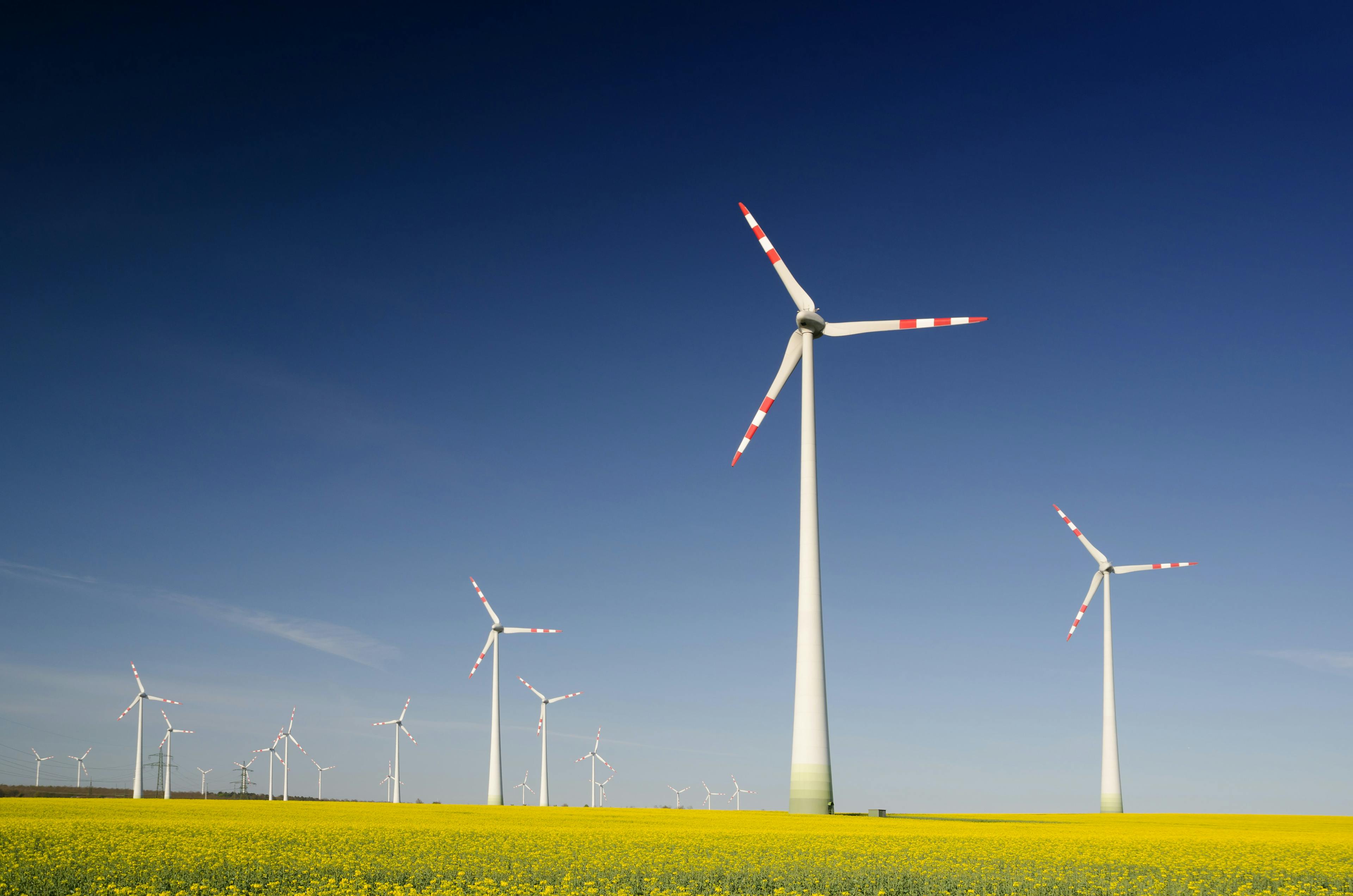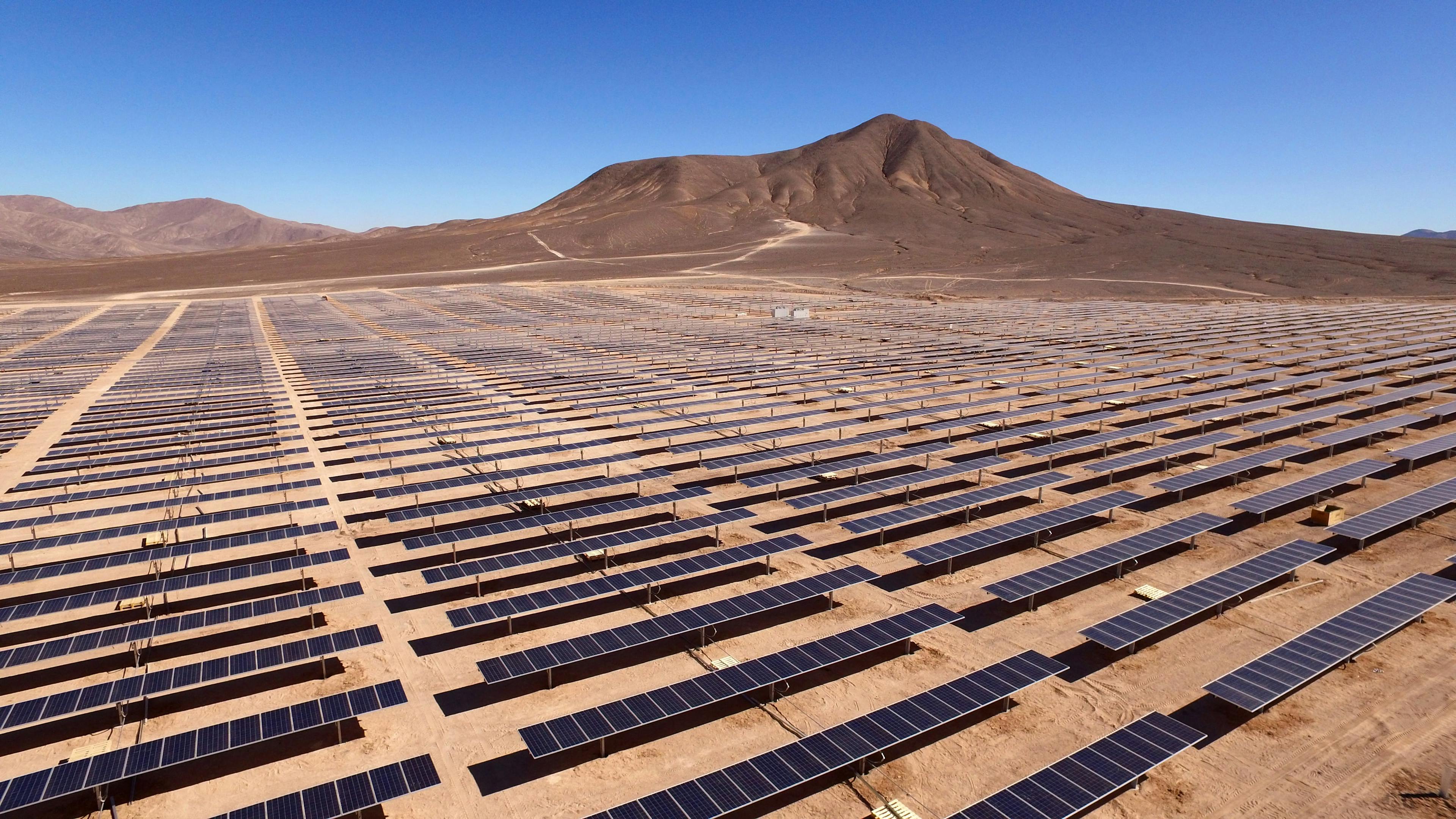Exploring Virtual Power Purchase Agreements (vPPAs) & Their Role in Renewables
10 Jul 2023

Power purchase agreements (PPA) are contracts to acquire electricity directly from an independent power producer (IPP) as opposed to purchasing power from a local utility provider or national grid.
They come in many forms and have been popularised in the last few years because of the price point of renewable energy outcompeting alternative sources.
The virtual – sometimes referred to as synthetic or financial – PPAs have risen in popularity as they offer a tantalising combination of incentives. The structure provides benefits such as renewable energy certificates (RECs), lower priced and less volatile energy expenditure, and an enhanced public image all without committing to the complex headache of developing projects - and even without needing to invest in the project!
The fact that all of these benefits can be obtained without requiring any financial investment upfront makes them an irresistible prospect for many corporations who are keen to take those first steps towards a greener image.
What is a Virtual Power Purchase Agreement (vPPA) and how do they work?
Virtual Power Purchase Agreements (vPPAs) are financial instruments that work very similarly to a Contract for Difference (CfD).
The net effect of having one in place – alongside a buyer’s existing supply contract – is that it synthetically allows the buyer to establish a fixed-rate cost for power from renewable energy projects over a long period of time (>10 years). This is all possible without any change to their existing physical power supply, nor any change to the transactions with that existing supplier.
By paying (or receiving) the difference between the spot market price and a fixed price agreed in the vPPA, the buyer can:
Earn renewable energy credits (RECs)
Make an expected positive net present value (NPV)
Hedge against the volatility of the energy market, thereby synthetically creating a fixed-price energy supply
The buyer continues to purchase power wholesale from the spot market or from their utility company, but are receiving RECs for the electricity they buy. This is because, for the power that they consume, the generator creates an equivalent amount of renewable energy that they sell to the wholesale market.
When the vPPA’s rate is below market prices, the buyer gains a profit from the vPPA, but they also lose a similar amount from paying higher spot market prices for the wholesale power they consume. The two effectively neutralise one another, hence hedging their electricity price exposure around the strike price (the price fixed by the seller).
Similarly, during periods when market prices fall below the vPPA’s rate, the buyer has to pay the difference – hence losses from the vPPA – but also gains an equivalent amount from lower wholesale prices. Again, the two neutralise.
The net effect is therefore similar to if the buyer had a physical PPA in place, priced at the strike price, hence the phrases “virtual PPA” and “synthetic PPA”.
The details become slightly more nuanced than the simplification above since there is a small expected gain from entering into the buy-side of a vPPA. The contract price is discounted compared to the expected average market price to incentivise the buyer into entering.
In reality, the supplier sells the electricity into the grid at spot market rates and also benefits from the addition of the vPPA, because the combination of the two creates a synthetic fixed price PPA, hence hedging them of price risk, and therefore allowing the project to structure the financing needed to build the project in the first place.
The disconnect between the buyer and the renewable energy project is what distinguishes the vPPA from a physical power purchase agreement (PPA).
Physical PPAs are an agreement between the buyer and producer to have the producer directly supply the power they generate to the buyer, via either a direct wire or via the grid. That requires infrastructure to be laid to connect the two parties.
The principal lack of a physical connection in vPPAs supports the distribution of power to, or from, multiple sites without the additional cost that comes with financing the infrastructure to supply renewable power. Thus, vPPAs offer a greater degree of flexibility for large buyers or IPPs, and those who wish to power dispersed sites with renewable energy.
At their core, vPPAs are a contract. For those looking to negotiate a vPPA, there are some considerations which can minimise risk.
The certificates that come with the vPPA are assets that can be traded, but jurisdictional differences can affect their issuance and use. That in turn can affect corporate ESG status, so understanding the regulations around them will prevent unwanted surprises. Moreover, vPPAs are subject to multiple standards for reporting and accounting, doubly so for global companies which may need to abide by the regulations of multiple countries. Specialist advisors should be employed to navigate regulations, avoid pitfalls, and maximise returns for the deal.

Benefits of vPPAs
Purchasers of renewable energy gain two major benefits beyond the lower cost of power in the forms of hedges and RECs. The establishment of a vPPA provides security by fixing the price of power which can provide security during times of market volatility.
Another component of the hedge is that the virtual nature of the agreement can reduce geographic risks as the conditions of the renewable energy producer will not affect output to the customer.
The other major benefit of vPPAs are RECs the buyer receives which serve multiple functions. The most immediate benefit they bring is that RECs are an asset which can be traded and raise capital.
Secondarily, RECs can allow the buyer to qualify for certain ESG benefits which serve as an additional source of income, and they attract consumers who are becoming increasingly sustainability-minded.
For the sellers of renewable energy, vPPAs carry the key benefit of raising capital and reducing the overall operations costs. Renewable energy projects have a significant cost of entry, and securing a purchasing agreement can help raise the funds needed to see the project through to completion.
Moreover, the premise of the purchasing agreement reduces risk as a whole. Even though potential gains during times of market highs are lost, the consistency of payments from the agreement provides long-term security for the producer.
Additionally, PPAs make debt much more accessible. The projects themselves are often independent of the parent company developing them, so by having easy access to plenty of debt, the parent company can continuously develop more projects at any one point in time. For the parent company, that not only raises funds but also diversifies risk across a pool of projects.
The whole spectrum of benefits has been realised by several major companies which have entered into vPPAs. Dupont, Nucor, and Covestro to name a few are entering their respective agreements for a projected combined 465 MW of electricity from renewable energy that would otherwise have been sourced from greenhouse gas-intensive production methods.
The Utilisation of vPPAs in the Global Renewable Energy Transition
vPPAs represent a lucrative opportunity for companies to join the energy transition at an early and easy opportunity. Renewable energy has become more competitive price-wise compared to other sources, and with the transition comes eligibility for grants and tax cuts (e.g. the United States offering tax credits).
Financial incentives make transitioning a prudent business decision. However, there are concerns that engaging in vPPAs can be interpreted by some as an act of greenwashing. Does the purchaser effectively bear no cost or responsibility beyond the contract that they negotiate with the renewable power provider? Especially, as they continue to draw power from their pre-existing grid.
Even though the buyer may still be powered by non-renewable sources, committing to vPPAs supports the growth of renewable energy projects by raising capital. That in effect creates a positive feedback loop where it finances projects and builds momentum for the transition to renewable energy.
Furthermore, vPPAs are growing in popularity for other less-than-obvious reasons. Since they do not require the installation of new infrastructure, vPPAs make the transition to green energy scalable. That scalability supports large entities which want to start making the transition at multiple locations or even nations.
Additionally, consumers are becoming more sustainability-oriented, and vPPAs let companies credibly demonstrate to those customers that they are operating responsibly.
The flexibility and diversification that vPPAs offer have led to virtual power purchase agreements becoming the dominant form of power purchases. In 2019, 82% of the purchase agreements made were in the form of a virtual agreement.
Global events such as a pandemic and conflict have caused instability in the power market, bringing to light the resilience that transitioning to renewable sources provides. Consumer knowledge and improving technologies - through continued investment in the cleantech space – will only continue to advance that push, and virtual PPAs will most likely come to lead this part of the transition.

Case Studies
The incentives offered by entering a virtual power purchase agreement do not only apply to corporate entities, vPPAs can work for nations as well as seen in the case of Malaysia.
In August of 2022, the Malaysian government introduced the Corporate Green Power Programme (CGPP), which would serve as a vPPA on a national level. At the time, over 80% of the power in Malaysia was sourced from coal or gas. The CGPP would fund the development of renewable energy to supply the nation’s grid, with a target quota of 600 MW for the span of 7 November - 31 December of 2022. The program was then expanded in March 2023 to 800 MW to service more customers.
While the program as a whole does not directly transform Malaysia’s grid into one sourced solely by renewable energy, the investments being made by securing purchases lays the foundation for the development of an entire industry.
At the corporate level, a recent example to look at is Toyota’s vPPA with Savion to reclaim a coal mine for a new solar project. The agreement expects 100 MW of power to be produced from the solar project to offset the energy consumed by Toyota’s operations.
For Toyota, the virtual PPA supports its initiative to have 45% of operations be powered by renewable energy by 2025 and to become carbon neutral by 2035. It faces some challenges such as the terrain that Savion intends to develop, given that optimal conditions for solar farms are flat land.
Both initiatives scale at vastly different levels, but are the end products of vPPAs. The capital that these agreements raise sets conditions for the renewable energy sector to grow and make prices even more competitive, all the while reducing greenhouse gas emissions from traditional methods.
PF Nexus
PF Nexus is a platform that is accelerating the energy transition, serving as a central point from which development and finance teams can explore, identify, and research renewable energy investment opportunities.
Subscribers gain access to an ecosystem database and project marketplace, from which they can see the various renewable energy projects available. Projects such as utility-scale solar, wind, battery, and other sustainable infrastructure are all available to support the creation of a diversified portfolio. From there they can make and evaluate deals, and collaborate with advisors and project owners.
With more than 4,500 users from over 2,600 clean energy investors, lenders, advisors, and developers, PF Nexus is rapidly gaining traction in the industry, particularly as countries strive towards net-zero emissions, and the energy transition continues to progress.
Summary
Virtual power purchase agreements proliferate the use and expansion of renewably sourced energy. They are financially prudent decisions that support the global energy transition. The competitive price of renewable energy is secured by the vPPA, and the capital raised by those agreements is reinvested in the creation of more green energy projects to make them even more competitive against alternative energy production methods.
That in turn helps create a more sustainable future as reliance on non-renewable energy sources will reduce. For those interested in being part of the transition and entering a vPPA, PF Nexus offers a comprehensive database for research and communication to find partners to work with.
Hopefully, there will come a day when vPPAs become obsolete as renewably sourced energy becomes the mainstay for power generation.